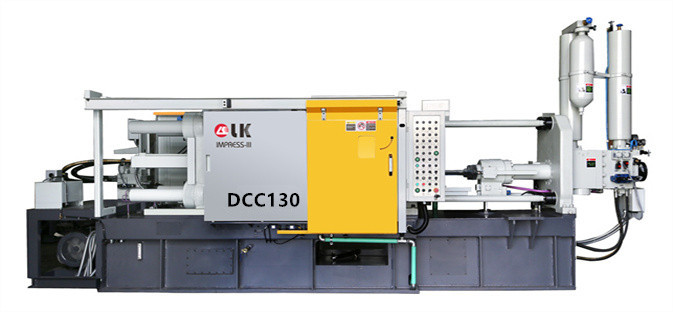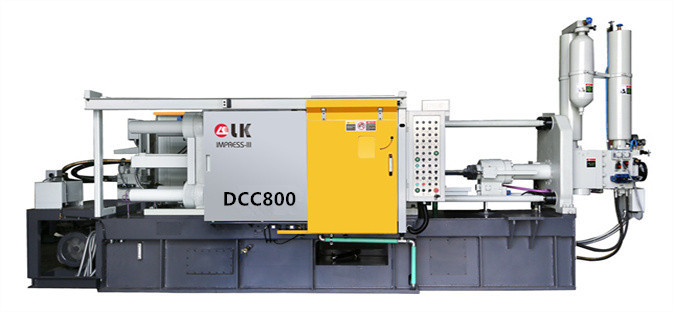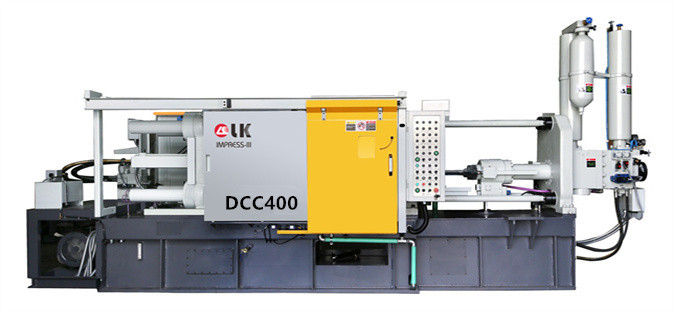Can You Zinc Plate Die Cast?
LK Die Casting Machine / 2024-07-04 08:47:21
Introduction
Zinc is a metal widely used in manufacturing, known for its superior mechanical properties and machinability. Die casting is a manufacturing process in which molten
metal is injected into a mold to form a part. This article explores whether zinc sheet is suitable for die casting, and details the process, advantages and
disadvantages, and application scenarios of zinc die casting.

What is die casting?
Die casting is a precision casting process in which molten metal is injected into a mold under high pressure to form a part of a predetermined shape. This process
is suitable for producing parts with complex shapes and precise dimensions, and the metals commonly used include aluminum, zinc, magnesium, etc.
Zinc sheet and zinc die-casting
A zinc sheet refers to a zinc alloy sheet made by a rolling process, which is widely used in construction, decoration, and electrical engineering. Zinc die casting
is a process in which molten zinc alloy is injected into a mold under high pressure to form parts. Although both zinc sheet and zinc die casting use zinc alloy,
their uses and processing methods are completely different.
Is zinc sheet suitable for die casting?
Technically, zinc sheets are not suitable for direct die casting. Die casting requires the use of molten metal, while zinc sheet is a solid material. In the
die-casting process, the zinc alloy needs to be heated to a molten state and then injected into the mold. Therefore, zinc plates cannot be directly applied to
the die-casting process.
Why use zinc alloy for die-casting?
1. Low melting point: The zinc alloy has a low melting point (about 380°C), is easy to melt, and is suitable for the die-casting process.
2. Good fluidity: The molten zinc alloy has good fluidity, can fill complex molds, and produces high-precision parts.
3. Excellent mechanical properties: Zinc alloy die-castings have good strength and hardness and are also excellent in wear resistance and corrosion resistance.
4. Economical: Zinc alloys are relatively cheap, and the die-casting process is efficient, suitable for mass production, and reduces unit costs.
Basic steps of zinc die-casting process
1. Raw material preparation: Select appropriate zinc alloys, such as the Zamak series.
2. Melting alloy: Heat the zinc alloy to a molten state in a special furnace.
3. Mold preparation: Make a precision mold, which consists of a moving mold and a fixed mold.
4. Injection process: The molten zinc alloy is injected into the mold cavity through a die-casting machine.
5. Cooling and solidification: The zinc alloy cools and solidifies rapidly in the mold to form the required parts.
6. Open the mold and take out the molded parts.
7. Post-processing: Perform necessary post-processing such as deburring, cleaning, and surface treatment.
Advantages of zinc die casting
1. High precision: It can produce parts with precise dimensions and complex shapes.
2. Efficient production: It is suitable for mass production and reduces production costs.
3. High material utilization: Waste materials can be recycled and reused to reduce waste.
4. Excellent surface quality: The surface of the die-casting is smooth and easy to carry out subsequent surface treatment.
Application areas of zinc die-casting
Zinc die casting is widely used in many industries, including:
1. Automotive industry: Production of parts such as door handles, radiator covers, seat adjusters, etc.
2. Electronic appliances: Manufacturing components such as connectors and switch housings.
3. Building hardware: Used to produce locks, door, and window hardware, etc.
4. Household items: Making lamps, decorative parts, etc.

Challenges of zinc die casting
High mold manufacturing cost: The mold design and manufacturing are complex, and the initial investment is large.
Strict control of process parameters: The process parameters such as temperature and pressure need to be precisely controlled.
Part size restrictions: Parts with larger sizes or thinner walls are prone to deformation and cracks.
Future Development of Zinc Die Casting
With the advancement of technology, the zinc die-casting process continues to innovate. In the future, intelligent manufacturing technology, advanced materials,
and environmentally friendly processes will further improve the production efficiency and product quality of zinc die casting. The application of automated
production lines will further reduce costs and improve production speed and quality.

Conclusion
Zinc sheets are not suitable for direct die-casting, but zinc alloy is widely used in die die-casting process. Zinc die casting has become an indispensable and
an important process in the modern manufacturing industry with its high efficiency, economy, precision, and environmental protection. Understanding and mastering
the zinc die-casting process will help achieve high-quality and efficient production in many industries.
Through the introduction of this article, I hope that readers can clearly understand the difference between zinc sheet and zinc die casting, and master the basic
knowledge and application scenarios of the zinc die-casting process. Zinc die casting has broad prospects for future development and will continue to play an
important role in the manufacturing industry.
Contact LK Egypt to learn more info about the die-casting machine
LKAGENT OFFICE DCM
Address: Industry Zone, South of Port Said Kebly, Egypt
https://www.zazdiecasting.com/
Phone: +86 13598704163
Mobile: +20 101 304 3317 +20 150 181 8310
Email: jack@zazmae.com ahmedmahmoud@zazmae.com
#die cast tooling
#trivalent chromate
#rapid prototype casting
#a360 aluminum
#aluminum caster
#aluminum prototype
#ideal 55 slider parts
#density of aluminum kg/mm3
#magnesium sheet metal
#parts of a metal gate
#subcontracting of screw machining for the luxury sector
#wall aluminum
#die casting tooling
#tooling for die casting
#density of aluminium in kg mm3
#clear chromate
#es casting metals
#gating material
#prototype aluminum
#sigma castings
#subcontracting of screw-machining for household appliances
#we squeeze to please machine
#aluminium gravity die casting
#aluminum part
#aluminum rapid prototyping
#nickel casting
#plunger tip for die casting machine
#rapid prototyping aluminium
OTHER CONTENT
-

2024-09-19 14:16:15 LK Cold Chamber Die Casting Machine DCC900 Locking Force: 9000KN Die Height: 400-1000mm Space Between Tie Bars: 930x930mm Shot Weight: 13.5Kg Casting Area Max:2250c㎡
More -

2024-09-19 14:11:06 LK Cold Chamber Die Casting Machine DCC280 Locking Force: 2800KN Die Height: 250-650mm Space Between Tie Bars: 560x560mm Shot Weight: 2.9Kg Casting Area Max:700c㎡
More -

2024-09-19 10:23:07 LK Cold Chamber Die Casting Machine DCC580 Locking Force: 5000KN Die Heigh: 350-850mm Space Between Tie Bars: 760x760mm Shot Weight: 6.9Kg Casting Area Max:1250c㎡
More -

2024-09-19 10:11:20 LK Cold Chamber Die Casting Machine DCC400 Locking Force: 4000KN Die Height: 300-700mm Space Between Tie Bars: 669x669mm Shot Weight: 4.7Kg Casting Area Max:1000c㎡
More

